BUILDING FOR OUR FUTURE




















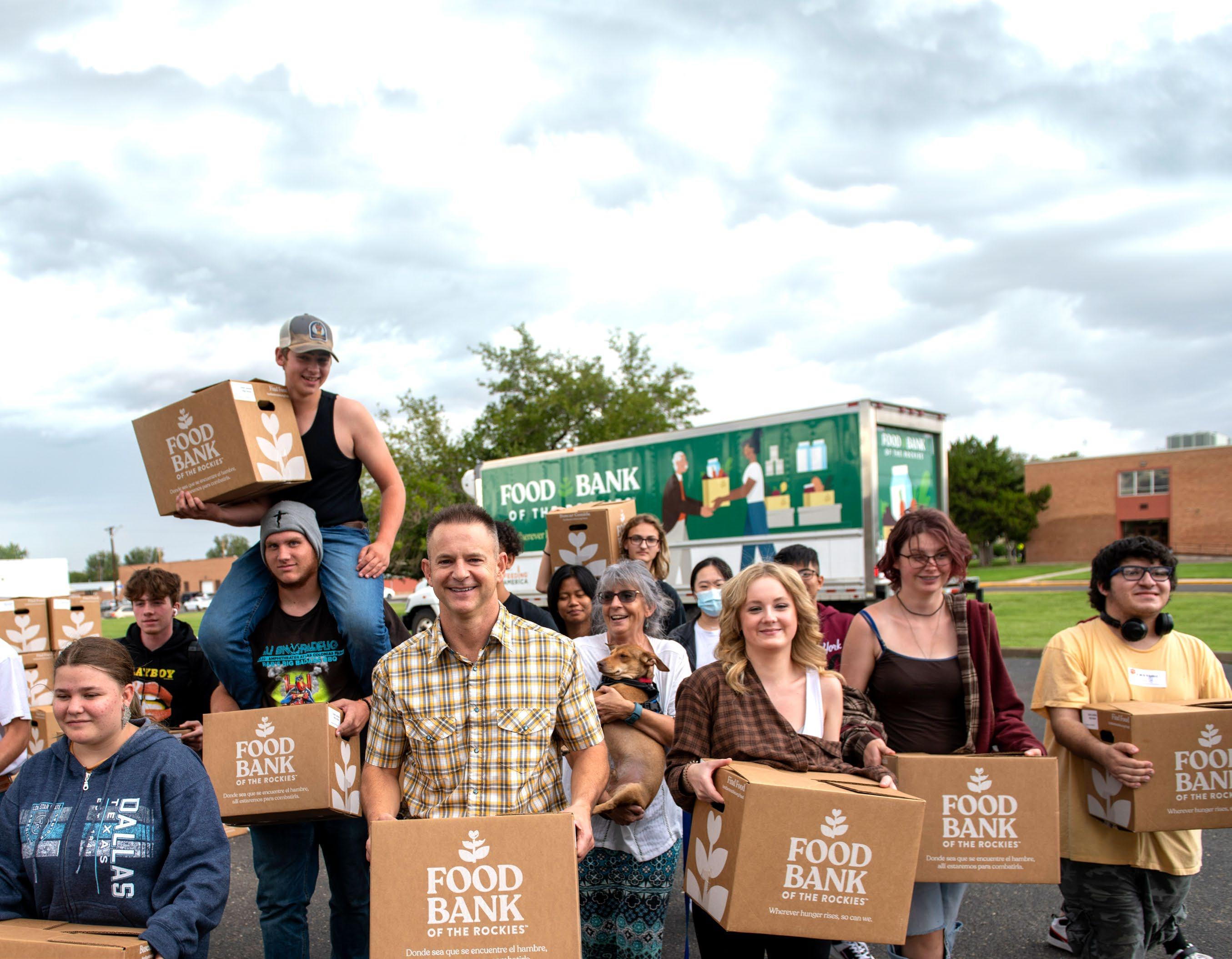
Imagine: you’ve invited 10 friends over for dinner.
Your kitchen contains nothing but a minifridge, a toaster oven, a cutting board, and one knife. You could certainly cook a meal—and it might be delicious—but the limitations would make it a nightmare of inefficiency. And you’ll always know you could’ve done better.

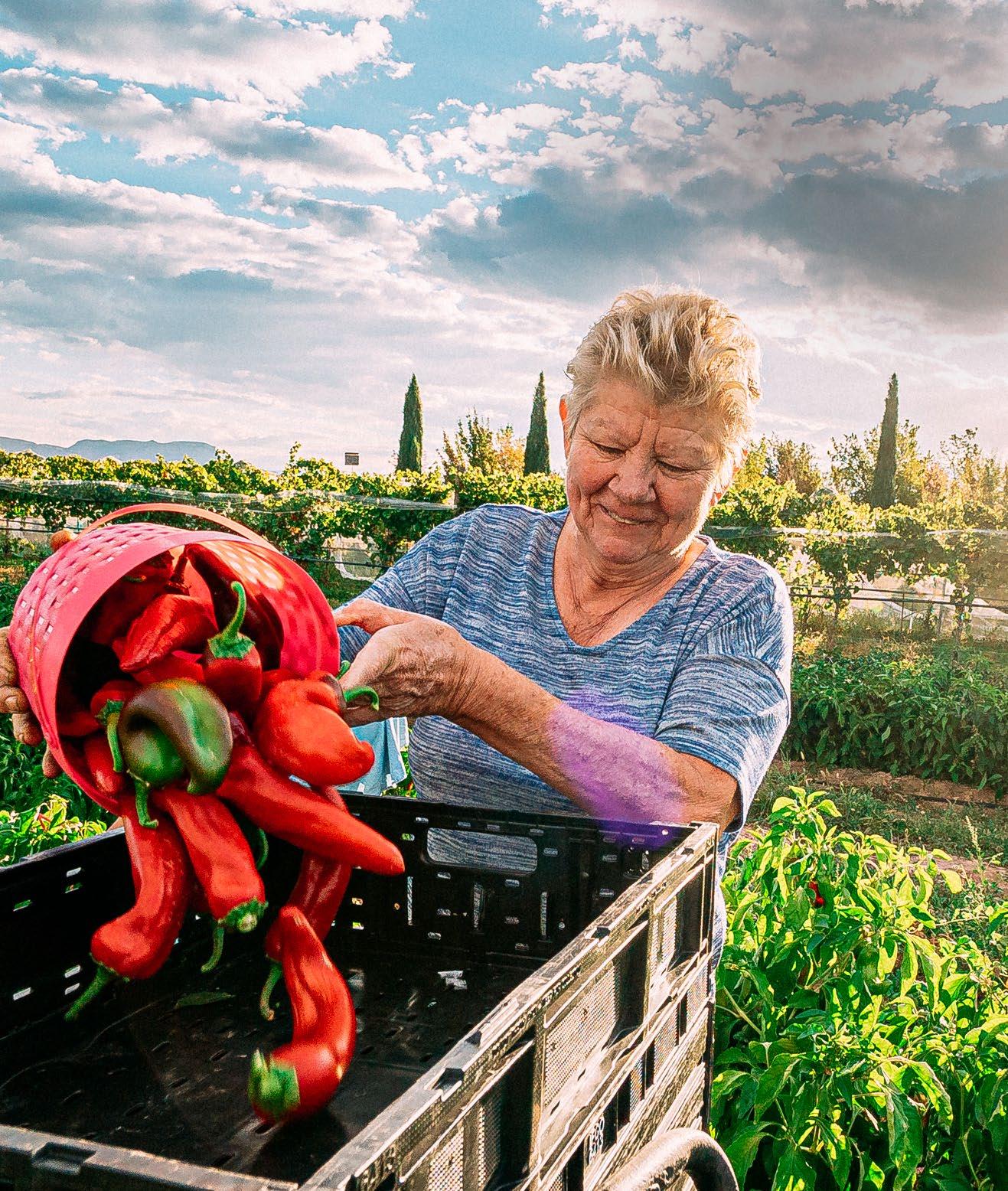
After more than 17 years in the same building, this is the challenge facing Food Bank of the Rockies. Although the metaphor is exaggerated, the impact is real: With far too few loading docks, our scheduling team spends hours choreographing the arrival and departure of semi trucks. With too little space for volunteers to work, we’re missing out on 200,000 hours of donated time each year. And with too little cold storage, our partners have far less fresh produce to choose from— and the neighbors they serve get far less variety.
In a time of growing food insecurity exacerbated by inflation and government cutbacks, our resourceful employees will always find new ways to serve our communities—just as we’ve waived our fees for Hunger Relief Partners and continue to transport donated food from local grocery stores to local pantries, free of charge.
But we know we can do more for our neighbors. So we’ve set our sights on building a new facility that will allow us to do just that.
One hundred thousand additional square feet won’t end hunger in Colorado and Wyoming. But it will give us the ability to store more fresh produce, to fill bags with food for students, to expand culturally responsive offerings, and to purchase more food by the truckload rather than the pallet. All those things will save money and feed more people, while allowing community pantries to spend more time on wraparound offerings like sign-ups for health insurance, housing assistance, and career services.
Read on to see how a new 21st-century, purpose-built facility will help Food Bank of the Rockies meet our communities’ needs for decades to come.
POUNDS OF FOOD DELIVERED
to families across Food Bank of the Rockies’ service area (in millions)
81M
18M
2006 2022
1
GROWING NEED, SHRINKING SUPPORT

During the pandemic, we all saw people in cars waiting for COVID tests, people in cars waiting for COVID vaccines, and people in cars waiting for food. The first two scenes are distant memories, but the third has returned—with a vengeance.
Hunger can impact all areas of a person’s life, causing difficult choices between putting food on the table and paying for rent, transportation, and child care. For children facing hunger, the consequences may include:

Repeating a grade in elementary school
78% AVERAGE RENT ROSE
Don’t be fooled by historically low unemployment figures: Many people in need of food assistance work fulltime jobs that simply don’t pay the bills. The real culprit is rising costs: car payments, housing, health insurance, and food. And because landlords, lenders, and doctors expect to get paid, people are turning to food banks to make up for the shortfall at the end of every month. COVID put food insecurity front and center, and quick support from the federal government helped. But that support has ended and, incredibly, the need is significantly higher now than it was prior to COVID.
Experiencing developmental impairments in areas like language and motor skills

Having more social and behavioral problems
More people are being forced to choose between paying rent and putting food on the table.
— ERIN PULLING CEO, FOOD
BANK OF THE ROCKIES, ON NATIONAL PUBLIC RADIO’S 1A
Statistic compares 2010 rental rates to 2020 rates in Denver.
GROWING NEED 3
Source: Denver Department of Housing Stability.
If we hope to serve our communities while preparing for the future, Food Bank of the Rockies needs to invest in a bigger, better facility in Denver. That’s why we’re launching Fulfilled: Building for Our Future.


TURNING A CHALLENGE INTO AN OPPORTUNITY
OUR VISION IS ABOUT PEOPLE:
better food, better partnerships, better operations, and a better future.

Our vision goes far beyond a building. Our vision is about people: creating greater, more equitable opportunities for the families and communities we serve as well as our Hunger Relief Partners, volunteers, and staff. The building is simply the necessary vehicle to drive us toward our vision and support our ambitious goal: nourishing communities with enough nutritious, culturally responsive food to thrive.
The funding for this project will come from philanthropic support, and Food Bank of the Rockies will secure additional funds from other sources, including New Market Tax Credits, proceeds from the sale of our current building, federal appropriations, and operating reserves.

Larger kitchen means
5x
MORE KIDS MEALS
More refrigerated space means







100%
MORE FRESH FOOD DISTRIBUTED
Mon-Sat 4pm
OPPORTUNITY 5
BETTER FOOD

We’ve helped reshape people’s understanding of a food bank—from a place that makes good use of leftovers to an organization that nourishes a community. But we can do so much more for our partners and the people they serve.
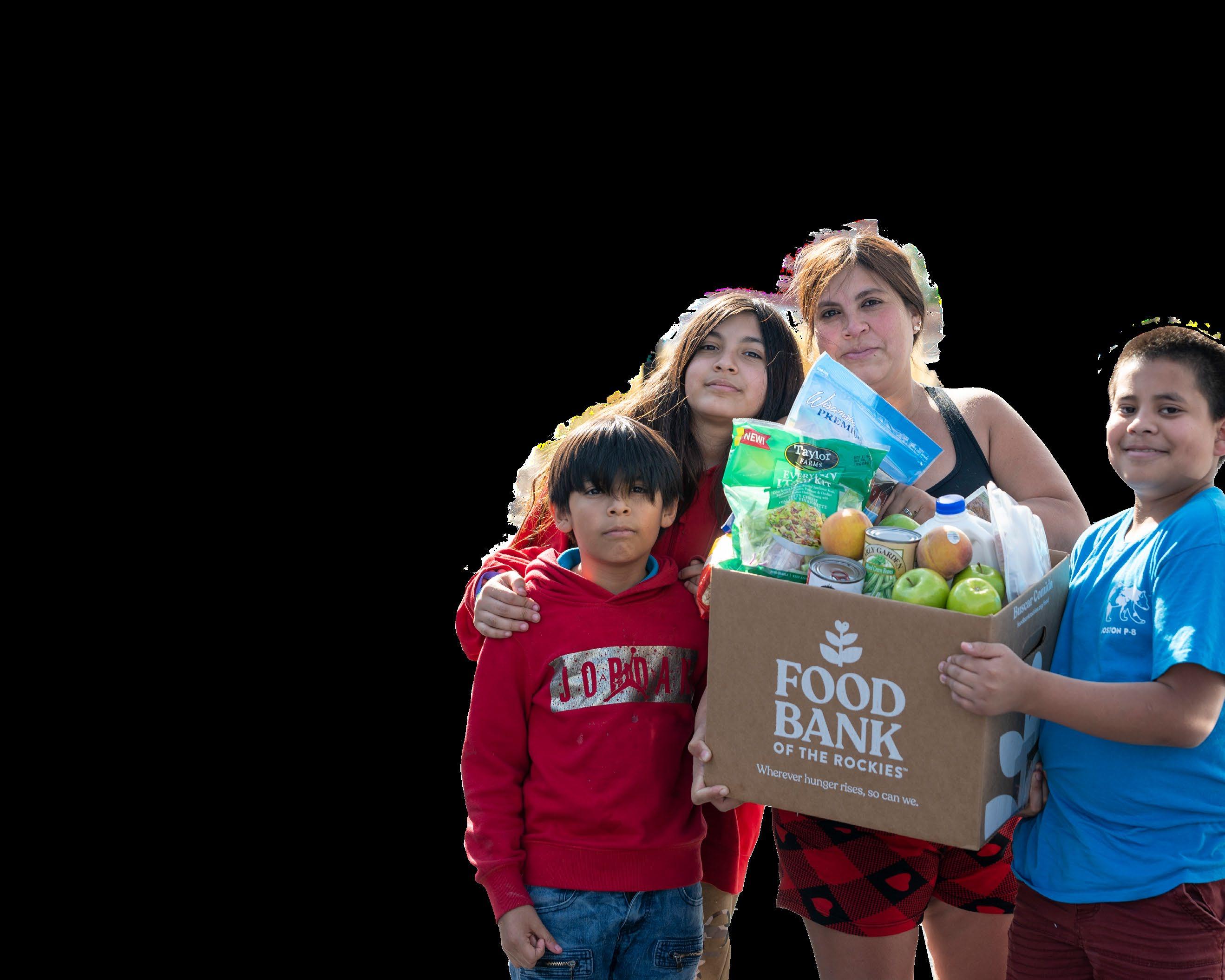

Years ago, people equated the term “food bank” with a warehouse full of leftover soda, canned soup, and crackers—sugar and sodium that could sit on a shelf forever. We’ve helped change that. Our goal isn’t simply to distribute as much food as possible—it’s to nourish people with fresh produce, to offer meals that reflect a community's cultural heritage, and to meet the needs of growing children and aging adults.
Fruits, vegetables, protein, and dairy represent more than
Our new 6,800-square-foot kitchen will allow seven staff and 20 volunteers to collaborate, preparing meals and, when possible, cooking from scratch while offering culinary training that can make the difference between a job and a career. More room, more help, and more modern equipment translates to better meals.
We’re already looking to raise the bar in the following ways:
Offering a new “order ahead” meal program that allows people to select food item by item, once we’ve acquired more storage and initiated more frequent food deliveries.
Expanding our healthcare partnership program, which offers nutritious food for community members with medical conditions including diabetes and hypertension.
The new kitchen won’t just be a little bigger—it’s moving us into a completely different category that allows us to prepare meals and cook from scratch when possible. We won’t simply reheat food and slice vegetables; we’ll be able to craft more nutritious menus and more culturally responsive meals—everything from Vietnamese to Russian to Mexican, which helps us make a bigger impact in diverse communities.
That work will be much easier to accomplish in a new facility. Our current kitchen is tiny, just large enough to hold three employees and six volunteers who can do little more than reheat food, prepare sandwiches, and slice vegetables.
Introducing innovative approaches that are already redefining best practices in food banks across the country.
— CINDY MITCHELL VICE PRESIDENT OF PROGRAMS, FOOD BANK OF THE ROCKIES
2/3 OF ALL THE FOOD WE DISTRIBUTE.
FOOD 7
BETTER PARTNERSHIPS

Food Bank of the Rockies serves 800+ Hunger Relief Partners across Colorado and Wyoming. A larger, modern facility will help us take an enormous burden off their shoulders so they can address the root causes of poverty and food insecurity.

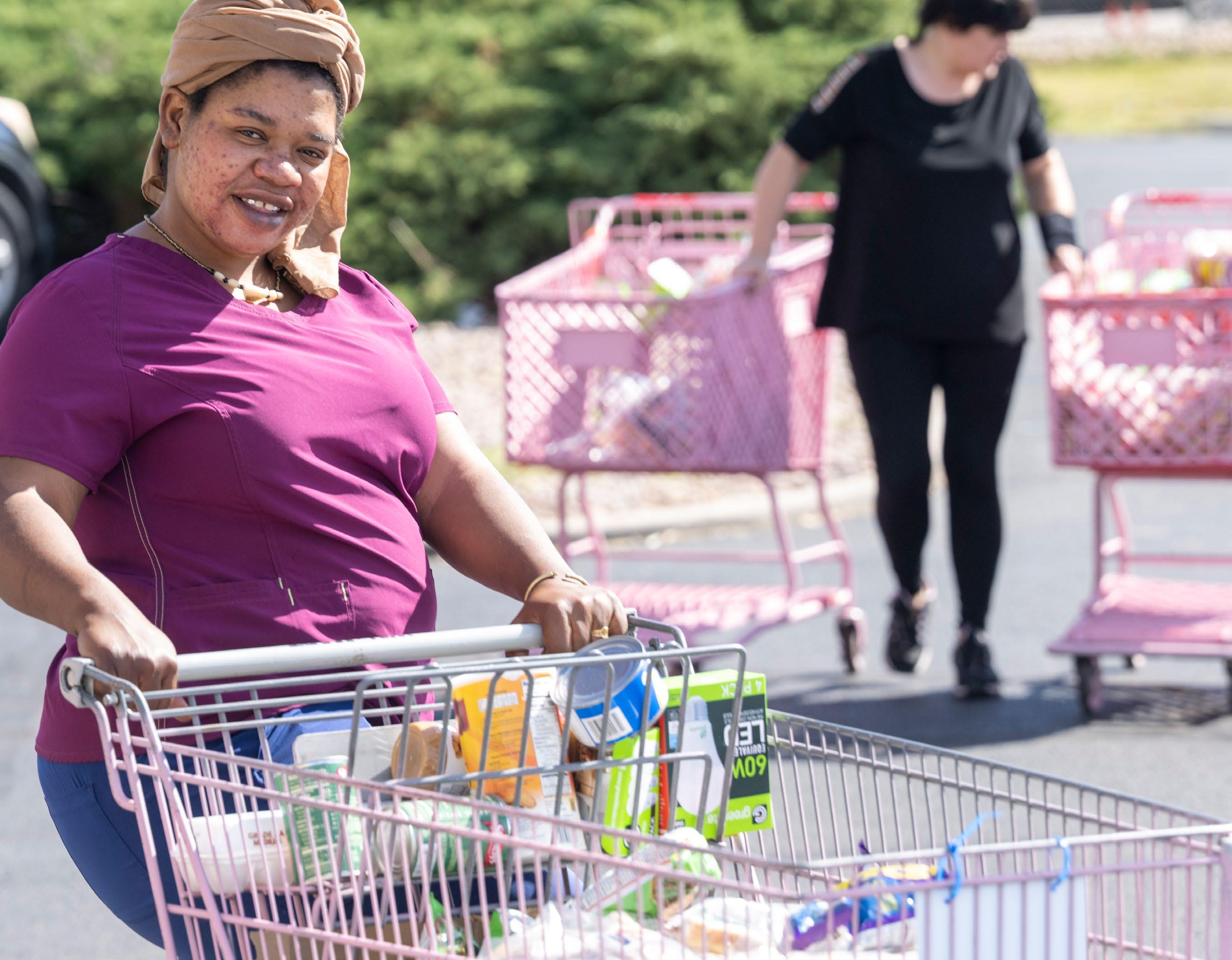
Although we provide food directly to thousands of people in 55 counties, most of our time and energy goes into serving our Hunger Relief Partners— small pantries, places of worship, and community centers that put food directly into people’s hands.
Thanks to community support, we are distributing enough food for more than
181,500 MEALS A DAY.
Of all the food moving through our facility, only 10% are items that we purchase and provide to our partners at cost—an annual savings of $3.4 million generated by their collective buying power. More loading docks means bigger shipments, which means even lower costs and more savings. And the more frequently we can deliver that food, the less our partners need to worry about storage and the more they can focus on distribution. And the more boxes our volunteers fill, the more our partners can focus on fulfilling their missions by helping their clients apply for health insurance, career training, and housing subsidies.
With our new facility, we plan to offer at least 150 items to local pantries at all times. By doubling our cold-storage space, we can expand the fresh fruit and vegetables on hand at any given moment. Our size will even allow us to become the newest hub for a national food distributor, which means we’ll generate income and consistently stock dozens of staples—items we can purchase and deliver to pantries whenever there’s a need. We’re well on our way to offering every Hunger Relief Partner a reliable selection of nutritious, affordable food in a few clicks.
OUR SERVICE AREA
Our school provides free snacks to every child that needs one, and we offer Friday food bags to students who don’t have enough to eat over the weekend, with fresh items like fruit, vegetables, and dairy. We all know kids need food for growing bodies and growing minds, but it’s more than that: Poverty scars the body and harms the soul, making kids feel unworthy, creating sorrow, desperation, and sometimes anger. Getting a food bag can make a child feel loved and seen, instead of invisible. And for us, it would be impossible without Food Bank of the Rockies.
Food Bank of the Rockies

Distribution Centers







Other Feeding America Food Banks
 – SANDY STEWART SPECIAL EDUCATION PARA PROFESSIONAL, DENVER GREEN SCHOOL
– SANDY STEWART SPECIAL EDUCATION PARA PROFESSIONAL, DENVER GREEN SCHOOL
PARTNERSHIPS 9
BETTER OPERATIONS
We get it: Logistics can be dry and complicated. But when you purchase peanut butter by the pallet, every square foot of storage space means lower prices— and greater impact in our communities.
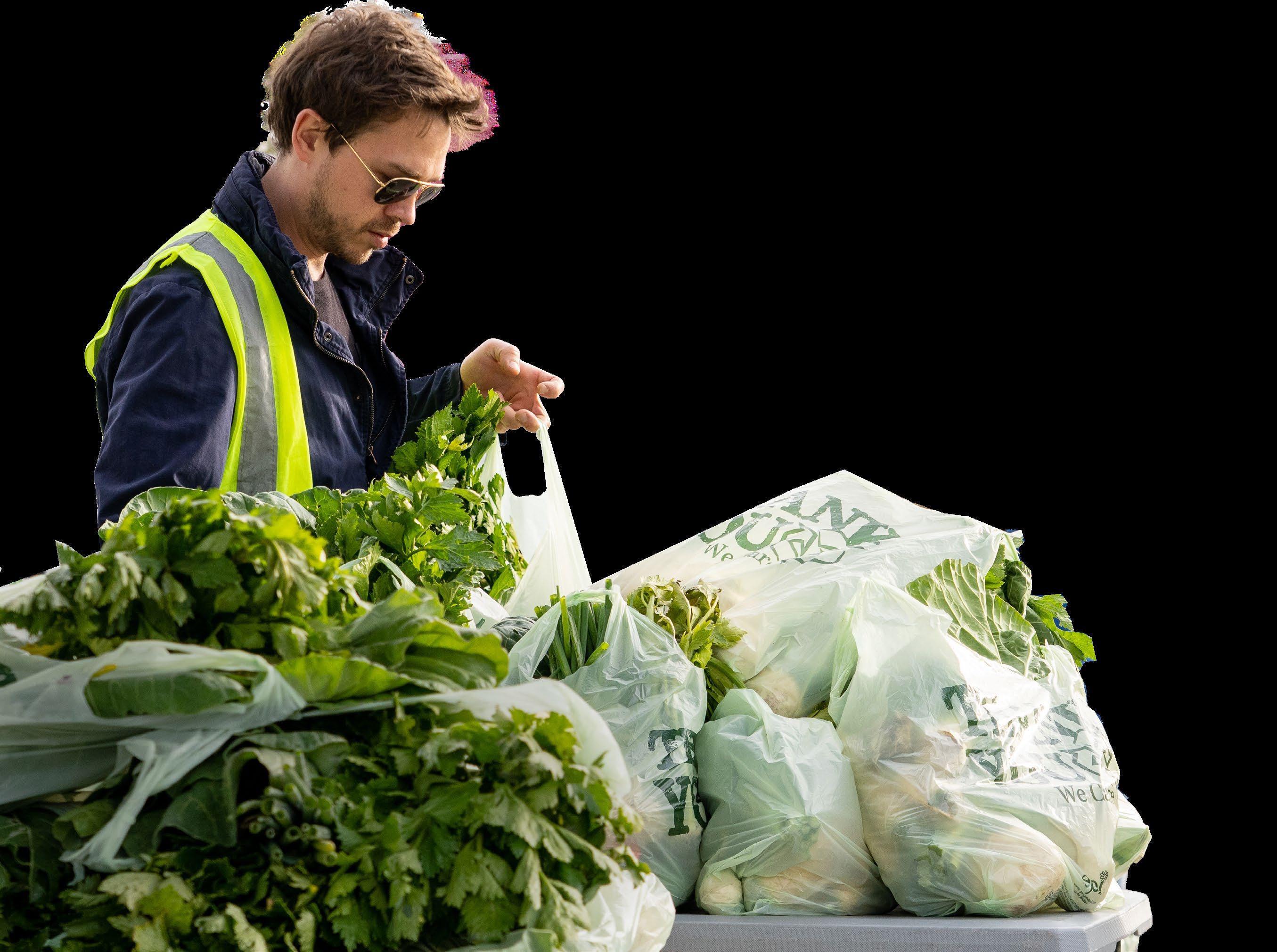

When staff and volunteers from local pantries arrive at our facility to select food, we immediately see the anxiety on their faces as the clock starts ticking. As one of our employees recently said, “Getting food shouldn’t feel like getting tickets to a Taylor Swift concert.” But when shelf space is lacking and loading docks are at capacity, that’s the inevitable result. Every additional loading dock and square foot of storage space will help erase that sense of scarcity.
3x the number of daily volunteers from
provide to our Hunger Relief Partners, we purchase products, too: For instance, in 2022, we bought 260,000 jars of peanut butter. Each jar that we provide saves our partners 37 cents—that’s nearly $100,000 in savings in peanut butter alone. If we’d had enough dock doors and storage space to receive more product, that savings would have been expanded. Multiply that savings by all of our offerings, and you’re looking at millions of dollars, a few pennies at a time—savings that our Hunger Relief Partners can invest in their communities.
Tight space limits what our volunteers can do, too. Although our volunteers essentially provide us with the equivalent of 50 additional full-time employees at no cost, we could easily generate the equivalent of another 100 fulltime employees if we had a little more elbow room. It’s like a company turning away dozens of workers for lack of parking spaces.
We’re helping young people from low-income rural areas change their life trajectory to become successful, productive adults, and we can’t do any of that if they’re hungry. We used to go to our local grocery store and buy produce every week, but with Food Bank of the Rockies’ bulk buying power and the free produce delivered to our doorstep, it makes our job 10,000 times easier.
— JODI WALKER FOUNDER/CEO, KIDS AT THEIR BEST, FORT MORGAN, CO
Our logistics team embraces the challenge of too little pavement and too little time for too many trucks, but when your job is a never-ending version of Tetris, you’re investing way too much energy solving the wrong kind of problem.
There’s an even bigger financial impact: In addition to all the fresh food that we

100 300 TO
OPERATIONS 11
BETTER FUTURE

Food Bank of the Rockies helps feed people across our service area, which covers roughly half of Colorado and all of Wyoming. And we’re determined to change the underlying conditions that are challenging these communities in every way we can.
It’s why our new facility will expand the workforce development training we’ve done with Stout Street Foundation and other partners, offering jobs to people who are recovering from substance use disorders and homelessness.

It’s why we’ll invite Hunger Relief Partners to hold meetings and community gatherings in our expanded space. We’ll expand our student volunteer opportunities, which provide teens with chances to give back to their communities while educating them on the causes and impacts of hunger. With more cold storage for fresh produce, we’ll increase our purchases from local farmers.
We’ll also shrink our carbon footprint and lower our utility costs with sustainable elements including solar panels on our rooftop, bike storage for staff and volunteers, and new electric trucks for our fleet. We’re excited to have more office space for our employees so they can come together to collaborate, generating new ideas to serve our partners and our communities.
We need your support to achieve this transformational vision, to build a larger facility, and to make these opportunities possible. Help us ensure that all of our neighbors have full cupboards, full plates, and full lives.
Join us.
FUTURE
Although feeding people is incredibly important, we recognize that food insecurity is a symptom of a larger societal problem—one that we’re tackling in a number of ways.
Food Bank of the Rockies 10700 E. 45th Ave. Denver, CO 80239

foodbankrockies.org




















Fulfilled fulfilled@foodbankrockies.org
foodbankrockies.org/fulfilled

































